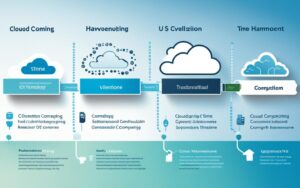Table of Contents
Web apps and cloud environments are being targeted by more aggressive and complex attacks. Just this past July, Microsoft Azure suffered a ten-hour outage after it was hit by a DDoS attack. The world’s increased reliance on web services and cloud infrastructures is likewise prompting a rise in online threats, which also feeds the growth of cyber defence solutions.
The growth of the Web Application Firewall (WAF) market is, then, fueled by rising demand for web protection solutions. The WAF market is projected to grow at a CAGR of 16.7% for the period 2024 to 2033. Organisations are acknowledging the need to have adequate defences against cloud and web app attacks as they likewise comply with new regulations on securing consumer data hosted online.
But what is the technology that powers WAF solutions? In particular, how does it ensure the security of web applications, especially in hybrid environments? Get to know how Web Application Firewalls secure web apps and why there is a need to employ them.
What Makes WAF Different from Conventional Firewalls
As the phrase suggests, Web Application Firewalls are firewalls designed to prevent attacks aimed at web applications. They monitor and filter traffic between web apps and the internet to block threats such as SQL injection, XML injection, cross-site scripting (XSS), cross-site request forgery (CSRF), clickjacking, session hijacking, and server-side request forgery.
WAF solutions have a number of key functions. One is the inspection of requests, which entails the analysis of HTTP requests based on predefined rules. Another function is the blocking of malicious requests, queries, and injection of malicious scripts.
Additionally, WAF solutions employ rate limiting and denial-of-service protection strategies. They also track malicious traffic and keep logs of security incidents to facilitate further analysis and security audits.
Essentially, WAFs are firewalls specialising in web application protection. Conventional firewalls operate at layers 3 and 4, but WAFs function at layer 7 or the application layer. They examine web traffic and analyse traffic data at the individual web request and response level, unlike conventional firewalls that are limited to checking traffic source, type, and destination.
Moreover, WAFs come with the ability to set custom rules, making them highly flexible for deployment in varying web-based environments.
Ensuring Protection in Hybrid Environments
The lion’s share of today’s tech lives in the cloud. One recent survey from Flexera found that 58% of tech professionals still plan to further escalate their cloud workloads, with 89% currently working in multi-cloud environments and 73% favouring hybrid cloud.
Because databases and workloads are spread across resources, hybrid and multi-cloud environments create complexities in securing web applications. They present new security risks to organisations, especially those that are new to hybrid setups and still lack the proficiency to address the complex web of threats affecting the cloud. This is the advantage of firewall solutions that specifically address hybrid environment challenges.
WAF technology protects web apps in hybrid environments in four main ways: cross-environment protection, enhanced scalability and flexibility, the integration of security functions with cloud services, and enhanced security compliance.
Web Application Firewalls afford cross-environment protection as they filter inbound and outbound traffic across the cloud and on-premises. With this type of setup, it does not matter where the WAF is hosted – it can still address threats such as XSS and SQL injections to give web apps the security conventional firewalls cannot provide. Also, many cloud-based WAFs like Azure WAF and AWS WAF enable centralised management to make web app protection easier and consistent for hybrid infrastructures.
In terms of scalability and flexibility, WAFs make it possible to dynamically scale with the surges in web traffic, even as it’s spread across local and cloud resources. The WAF can also be set with application-specific rules to match the requirements of apps that need protection. High-quality WAFs support hybrid cloud orchestration and API integration to make sure that they can efficiently serve the security requirements of web apps.
Also, WAFs can be deployed at the edge of the network, giving organisations the flexibility in applying firewall protection. This function is crucial in hybrid environments where fine-tuned or granular security controls are needed at the application layer.
On the other hand, WAFs integrate security with cloud services. They are particularly tightly integrated with popular cloud platforms such as Google Cloud, AWS, and Azure. They come with native functions such as DDoS protection, identity and access management, and cloud workload defence. It is also common for WAFs to be capable of protecting APIs, which tend to have vulnerabilities because of the complexities of app deployment in hybrid environments. WAFs can block attacks designed to exploit security weaknesses in API endpoints.
Moreover, Web Application Firewalls are designed to meet cybersecurity and data protection regulations. They aid organisations in meeting the compliance requirements of the General Data Protection Regulation (GDPR), Payment Card Industry Data Security Standard (PCI DSS), and other relevant laws and regulations. They generate security event tracking logs and other data useful in security auditing and reporting.
It is also worth noting that hybrid environments entail synchronisation challenges due to data syncing and compatibility issues, latency, application and service integration problems, and security and compliance hurdles. This is not a way by which WAFs effectively secure web apps in hybrid environments, but it is important to mention that WAFs should be able to overcome data synchronisation problems across different environments.
Mitigating Cloud-Specific Vulnerabilities
In hybrid cloud environments, workloads may run on cloud services and on-premise infrastructure. This is a complex setup that conventional firewalls cannot properly secure. WAFs ensure that web applications and their workloads are protected from attacks that exploit cloud-native vulnerabilities like container security weaknesses and misconfigured cloud access settings, such as resources that have been mistakenly made publicly accessible and compromised API keys.
WAF solutions also readily address cloud-native threats even in instances where the apps are deployed in a serverless environment. They help mitigate the impact of errors in configuring network policies and container ports. They likewise counter cloud metadata attacks that seek to gain unauthorised access to resources as well as cloud API abuse, which is not detected by conventional firewalls. WAFs can detect and stop instances of excessive API usage and other related malicious activities.
Additionally, web application firewalls can provide protection against zero-day exploits that target cloud-based resources. They can be configured with custom rules to block zero-day exploits such as those aimed at services that may expose private data. Threat actors can exploit misconfigurations in cloud storage and network settings that have not been identified before, but with the right WAF rules, the likelihood of successful exploitation is significantly reduced.
Not All WAFs Are the Same
It is worth emphasising that the capabilities mentioned above may not be found in all WAF solutions. Web Application Firewalls are generally materially better than conventional firewalls when it comes to protecting web applications in hybrid environments. However, not all of them come with advanced features necessary to address the risks posed by the complexities, increased attack surfaces, and synchronisation challenges associated with hybrid environments.
As such, it is crucial to mindfully choose the Web Application Firewall to use. It is important to look for cloud-native protection, real-time monitoring, deployment flexibility, cross-environment operation, advanced threat detection, and the ability to seamlessly integrate with cloud services. Also, it is important to pay attention to compliance with regulatory requirements.
Securing web apps hosted in the cloud can be tricky. It becomes more challenging when applications are deployed in hybrid setups. Using WAFs is a necessity, but this does not mean that any WAF is enough to achieve sufficient protection for web applications.









